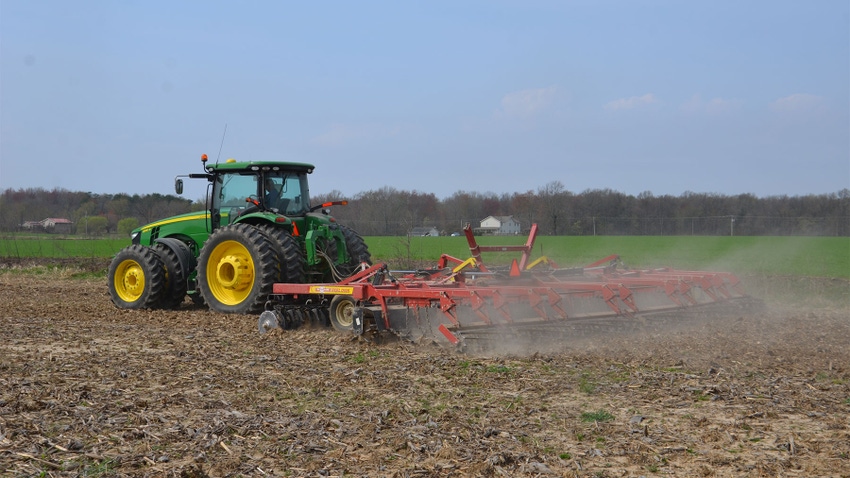February 7, 2024

High-speed tillage has gained a following over the past few years, but it can be daunting to invest in a high-speed disk. Hearing from someone who runs that equipment on their own farm can make the decision easier.
Matt Rausch, Pulaski County, Ind., has used two main pieces of high-speed tillage equipment in his operation over the past 10 years: a Landoll 7431 vertical-till tool and a Norwood Kwik-Till high-speed disk.
High-speed tillage refers to tillage passes over 7.5 miles per hour at 1 to 5 inches deep. Rausch says he made the switch to help cut back on soil compaction.
“The main thing was productivity and our soil types, and trying to get away from finishers and cultivator sweeps,” Rausch says. “We were running cultivator sweeps, and I thought that was creating a pan. And then, we just had to replace sweeps a lot.”
Another aspect of high-speed tillage that Rausch appreciates is the versatility.
“You can run in the spring or in the fall,” Rausch says. “It gives you a lot of different options as far as how to use it. The field cultivator is a spring-only tool, so you can use this as a primary or secondary tool.”
As mentioned, Rausch also has noticed higher productivity with his high-speed tillage implements. He can cover ground more quickly and experiences less downtime for maintenance.
Compaction not gone
Not everyone agrees that high-speed tillage reduces soil compaction. In fact, Bryan Overstreet, Purdue Extension soil conservation coordinator and Conservation Cropping Systems Initiative agronomist for northern Indiana, explains that it can still contribute to compaction.
“The biggest thing is that scraping motion,” Overstreet says. “We’ve seen for years how it causes compaction, so that’s the biggest downside.”
Overstreet adds that high-speed tillage tools could destroy shallow soil structure, reducing water infiltration rates and water retention capabilities. This leads to runoff and loss of valuable soil and nutrients.
Overstreet also says more damage can be done by operators working ground earlier than they should be.
“With that bigger equipment, many have the tendency to get in the field quicker than they really should be, causing more damage,” Overstreet explains. “You might think, ‘Oh, I can cross that field,’ but that doesn’t mean you should be going across it.”
He does note that speed and productivity are positive aspects of high-speed tillage, recognizing that many producers rely on it to save time.
“Guys are farming more acres, so it gives them a chance to get over more acres faster than with the traditional disk,” Overstreet adds.
Match equipment to your needs
It’s best to determine how your soil type will work with a new tillage mechanism, and select the equipment that is tailored to your needs.
The Landoll tool is the first one Rausch tested when introducing high-speed tillage to his operation. He enjoys its versatility, but he finds that it occasionally causes ridging.
“If you’re just using it as a sizing tool and not trying to move too much soil, the Landoll is fine,” Rausch adds. “But if you’re trying to move dirt with the Landoll, ridging seemed to become an issue.”
However, he hasn’t had that problem with the Norwood disk. He says that disk is better at moving more dirt and is comparable to the John Deere 2680H high-performance disk.
Read more about:
Conventional TillageAbout the Author(s)
You May Also Like






